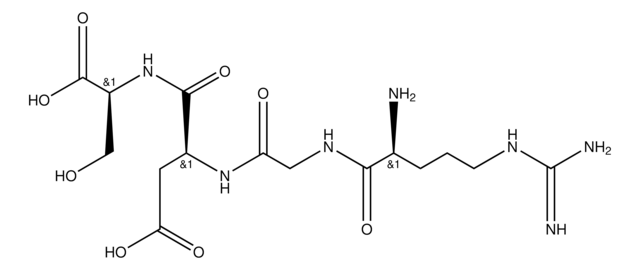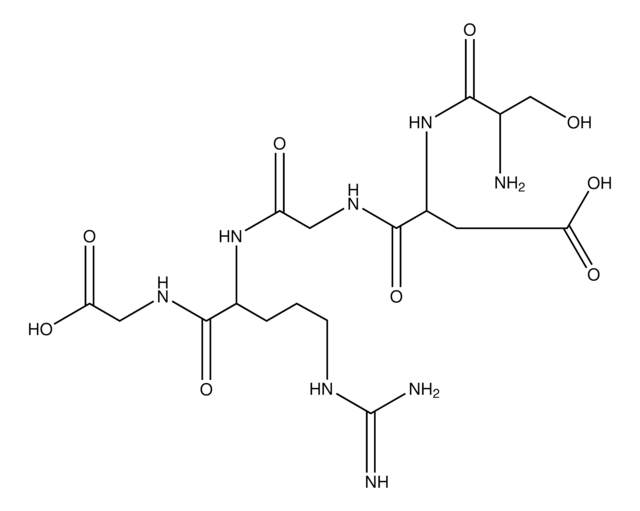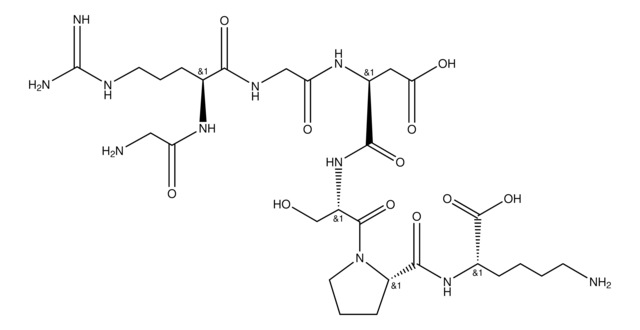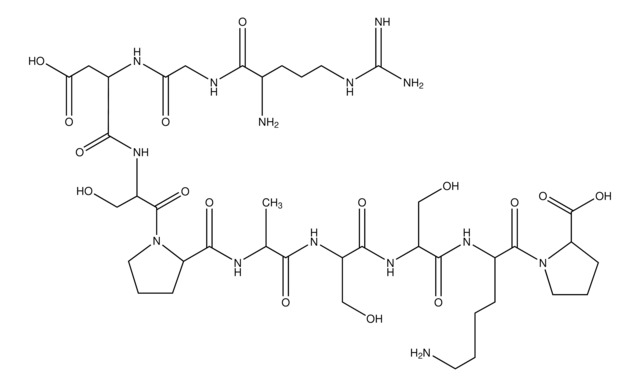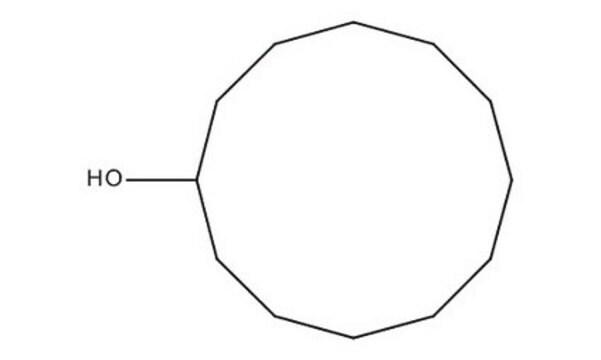G4391
Gly-Arg-Gly-Asp-Ser
≥97% (HPLC)
About This Item
Produits recommandés
Niveau de qualité
Pureté
≥97% (HPLC)
Forme
powder
Composition
Peptide content, ≥60%
Technique(s)
blocking: suitable
cell culture | mammalian: suitable
Température de stockage
−20°C
Chaîne SMILES
NCC(=O)N[C@@H](CCCNC(N)=N)C(=O)NCC(=O)N[C@@H](CC(O)=O)C(=O)N[C@@H](CO)C(O)=O
InChI
1S/C17H30N8O9/c18-5-11(27)23-8(2-1-3-21-17(19)20)14(31)22-6-12(28)24-9(4-13(29)30)15(32)25-10(7-26)16(33)34/h8-10,26H,1-7,18H2,(H,22,31)(H,23,27)(H,24,28)(H,25,32)(H,29,30)(H,33,34)(H4,19,20,21)/t8-,9-,10-/m0/s1
Clé InChI
RGNVSYKVCGAEHK-GUBZILKMSA-N
Informations sur le gène
human ... ITGB3(3690)
Vous recherchez des produits similaires ? Visite Guide de comparaison des produits
Amino Acid Sequence
Description générale
Application
- as an antigen to determine whether integrin α4 or α5 hinders the adhesion of day 3 postirradiation thymocytes to thymic epithelial cells, in mice
- for the treatment of collagen IV-coated dishes to study the role of integrins α1, αv, β1, and β3 in Sca-1+ progenitor cell differentiation into SMCs (smooth muscle cells)
- as a blocking peptide for the pre-incubation of Nisseria meningitides strains, to perform blocking experiments to study the interactions between these bacterial strains and fibronectin
- for the pre-treatment of EL-4 cells infected by AdCMV-GFP (cytomegalovirus-green fluorescent protein), to study whether interaction with cellular integrins is essential for the transduction of adenovirus
Actions biochimiques/physiologiques
Code de la classe de stockage
11 - Combustible Solids
Classe de danger pour l'eau (WGK)
WGK 3
Point d'éclair (°F)
Not applicable
Point d'éclair (°C)
Not applicable
Équipement de protection individuelle
Eyeshields, Gloves, type N95 (US)
Certificats d'analyse (COA)
Recherchez un Certificats d'analyse (COA) en saisissant le numéro de lot du produit. Les numéros de lot figurent sur l'étiquette du produit après les mots "Lot" ou "Batch".
Déjà en possession de ce produit ?
Retrouvez la documentation relative aux produits que vous avez récemment achetés dans la Bibliothèque de documents.
Les clients ont également consulté
Notre équipe de scientifiques dispose d'une expérience dans tous les secteurs de la recherche, notamment en sciences de la vie, science des matériaux, synthèse chimique, chromatographie, analyse et dans de nombreux autres domaines..
Contacter notre Service technique
